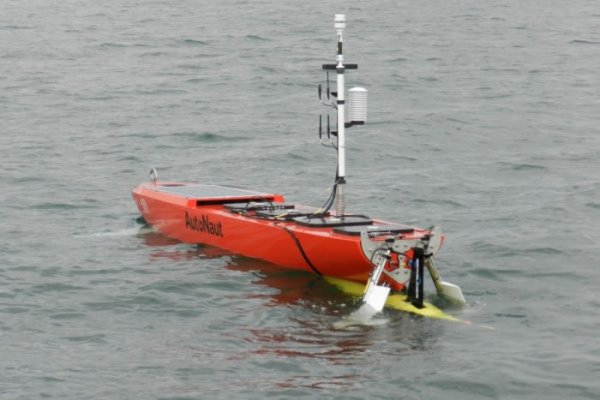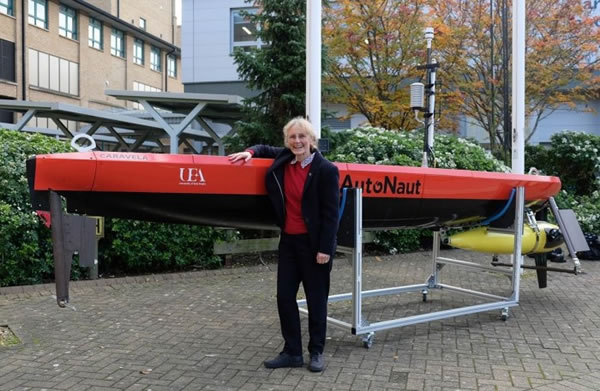Although autonomous underwater vehicles (AUVs) can indeed make the process of collecting ocean data easier, launching things is still troublesome. This is why scientists have developed a new system that uses unmanned surface craft to deploy autonomous underwater vehicles. Usually, automatic underwater vehicles are launched from a large ship. This means that the ship must burn fuel and increase other costs when sailing towards the deployment point. In addition, there is always a risk of encountering severe weather conditions or an enemy (such as pirates or foreign armed forces).

In addition, people can launch underwater robots from the shore. Logically speaking, this will be more complicated, and the submersible will eventually waste most of the battery power.
With these constraints in mind, a team at the University of East Anglia in the United Kingdom recently modified an existing unmanned surface vehicle, AutoNaut, so that it can be transported and then deploy an existing AUV called Seaglider. This two-part system is named Caravela.
Caravela can be easily launched from the shore. Then, it continued to advance to the AUV deployment location, driven solely by the power of the waves. AutoNaut combines wave foil technology to make it possible. In this technology, the front and rear elastic foils installed on the ship collect energy from the rise and fall of the waves and convert it directly into propulsion.

During this process, AutoNaut's solar sensors collect and transmit data, such as air pressure, air temperature, humidity, wind speed, and sea surface temperature. Once the ship ’s GPS detects that it has reached its destination, it will automatically release the Seaglider so that the AUV can begin its own underwater data collection adventure – the submersible can descend to a depth of 1000 meters (3281 feet) for a few months and cover Thousands of kilometers.
The researchers plan to conduct a field test of Caravela later this month, when it will be used on the Barbados coast to study how ocean temperature affects the air layer above, and how wind and sunlight affect the sea surface.
Professor Karen Heywood of East Anglia University first proposed this concept. She said: "Now, you can send Seaglider into the middle of the basin without using a boat, and it is too dangerous here. This means we can reserve batteries for science, It has a longer lifespan. It also allows us to more accurately decide when to release Seaglider, for example before the outbreak of seaweed tides or extreme weather events. "
polyurethane sandwich panel
polyurethane foam sandwich panel
1. Excellent price and quality
2.Light weight Sandwich Panel
3. Good quality Sandwich Panel
|
Product name |
Decorative embossed sandwich panels polyurethane sandwich panel/pu foam sandwich panel |
|
Metal board |
0.0.3mm |
|
Core material |
Hard Polyurethane foaming(for insulation) |
|
Back layer |
Aluminum foil |
|
Standard Size |
L3800*W380*H16(mm) |
|
Packing Size |
L3850*W415*H135(mm) |
|
Quantity |
8pcs /pkg or as you request |
|
Length |
3000-6000mm(1000mm, MOQ>500sqm) |
|
Weight |
3.7Kg/sqm |
Eps Sandwich Panel,Pu Metal Decoration Panel,Insulation Metal Siding,50Mm Eps Sandwich Panels
Jinan Zhengtang Insulation Decoration Material Co.Ltd , https://www.ztwallsiding.com